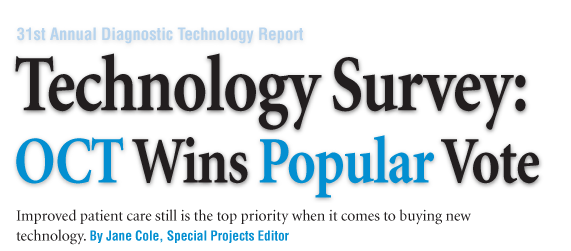
Once you decide to invest thousands of dollars into a new piece of technology for your practice, theres a lot to consider: return on investment, increased profitability, and the hopeful buzz that this latest and greatest technology will generate for your practice.
But, the top deciding factor in new technology purchases is improved patient care, according to results from Review of Optometrys 2008 Diagnostic Technology Survey. In fact, 83% of the 300 optometrists who responded cited improved patient care as the number one reason to invest in new technology. Only 8% of respondents cited increased revenue as the main impetus to purchase new technology.
While patient care remains pinnacle, new technology can also boost a practices bottom line. Some 68% of the doctors who took our survey said new technology purchases increased their profitability somewhat, and 12% reported that new technology increased profitability dramatically. By contrast, 19% of the respondents said that new technology had no effect on their profitability, and 1% said new technology actually decreased profitability somewhat.
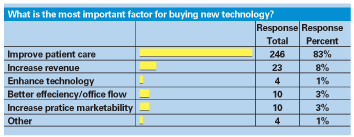
Major Investments
The majority of doctors who responded to our survey are investing significant dollars into new technology purchases. Specifically:
Forty-seven percent purchased new technology with price tags of more than $20,000.
Seventeen percent bought new technology ranging in the $5,000 to $10,000 bracket.
Fifteen percent made new technology investments between $15,000 and $20,000.
Fourteen percent spent between $10,000 and $15,000 on new technology.
Only 7% spent between $1,000 and $5,000 on new technology.
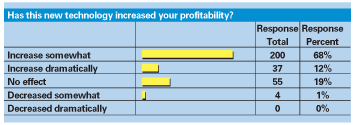
What You"re Buying
Optical coherence tomography (OCT) was the number one choice of doctors who responded to our survey. In fact, 54% ranked OCT as the key new technology that they either would consider purchasing or have purchased in the past three years.
The majority of respondents said the addition of the OCT has improved patient care, decreased referrals to specialists and boosted the bottom line.
We purchased an OCT two years ago, which has helped us provide earlier detection of macular disease and monitor glaucoma patients in a way we were never able to before, says optometrist G.S. Komarnicky of Vancouver, British Columbia. This tool has enhanced our quality of patient care, enhanced the education of our patients and put more money in the bank for future equipment purchases.
Optometrist J. Wigton, of
The addition of an OCT has allowed optometrist Martin White, of
The OCT has paid for itself in less than two years, and continues to be an additional source of revenue as well as helps me differentiate my practice as a high-tech practice in my area, he says.
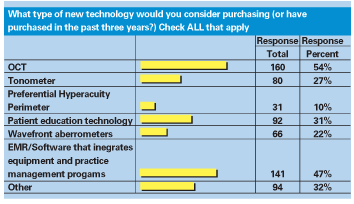
EMR and Software
While OCT is number one in popularity, according to this survey, electronic medical records (EMR) and software that integrates diagnostic equipment and practice-management programs rank a close second (47%) in new technology purchases.
One
My room is shortnine feetand I know that the calibrated letter sizes are extremely accurate, the O.D. says. Patients are impressed with my small handheld remote control and my ability to walk all around my room as they are reading the various charts and screens.
Most optometrists surveyed agree that the addition of EMR and integrated software has been a valuable investment.
Also, several O.D.s said this type of technology would be their next big purchase.
Optometrist Tamara L. Maule, of
Of course, the transition to EMR can pose challenges at first for O.D.s. The choice to do EMR has been a difficult transition, but after five months, it is getting easier, says optometrist Jessica Heinke, of
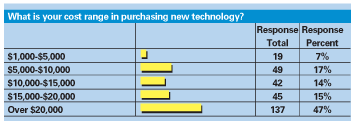
Other "Hot" Technologies
Patient education technology is the third most popular category among the O.D.s surveyed, representing 31% of responses. O.D.s have successfully incorporated this technology both in the exam and waiting rooms.
The Optometry News Network has been great to get patients talking about advertised technology available in our offices, says optometrist Bruce Lidkea, of
Many optometrists surveyed also purchased the Optomap (Optos) and are experiencing positive results. Optomap has allowed us to view the retina in a whole new way and share those results with the patient. We have helped many patients and made extra fees from the very beginning, says optometrist Dennis DeLee, of
Adds

